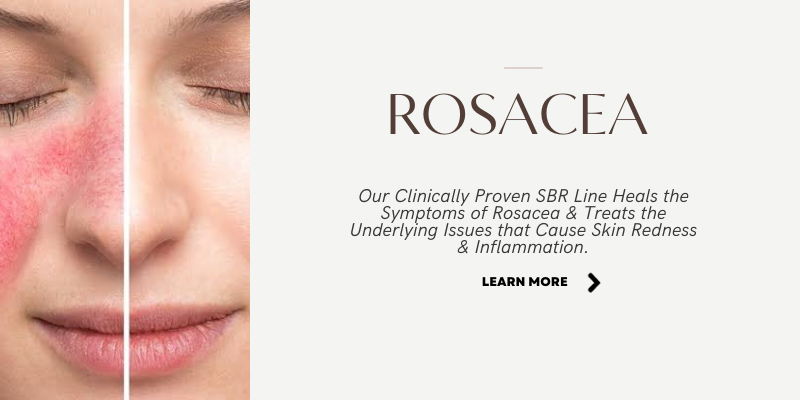Spending time outdoors is a great way to ease stress and get your daily dose of Vitamin D. But while you’re working and playing outside, you are risking damage from the ultraviolet (UV) rays of the sun. UVA, UVB and UVC rays damage skin cells, cause the skin to deteriorate and age (photoaging) prematurely, and as you likely have experienced, cause sunburn, sun blisters, hyperpigmentation, and acne breakouts. Prolonged exposure can cause skin cancer – the most common type of cancer in the US.
1. When is Sun the Strongest?
The sun’s rays are strongest between 10 AM to 2 PM (daylight saving time) or 9 AM to 3 PM (standard time). You should stay covered and/or remain in the shade during this period.
2. Should You Wear Sunscreen on Cloudy Days?
About 80% of the sun’s UV rays can penetrate even the densest clouds on the coolest days. So the answer to this question is an unequivocal yes.
3. Why You Should Use Broad Spectrum Sunscreen?
Sunscreen that features the term ‘Broad Spectrum’ protects from the damages across the UVA, UVB, and UVC ray spectrum. Mineral-based ingredients, primarily Zinc Oxide and to a lesser degree Titanium dioxide (we use this only for a bit of color to offset the whiteness of ZO, are the only FDA-approved ingredients that give broad-spectrum sun protection by reflecting the UV rays away from the skin, vs being absorbed into the skin.
4. What Is the Optimum SPF Requirement?
Sun Protection Factor (SPF) is the number that rates how well a formula blocks UV rays from entering the skin. Your sunscreen should be a minimum of SPF 30 to be effective. An SPF 30 sunscreen reflects 98% of the sun’s UV rays. Anything above it (even if it is Sunscreen with SPF 100) reflects no more than 99% of the UV rays.
5. How To Apply Sunscreen?
For a person of an average-build, a good thumb rule is to apply ‘one shot glass’ of sunscreen from head to toe. Of course, this will also depend on the consistency of the sunscreen and how well it blends with the skin. Apply generously to the face, neck, decolletage, arms, legs, ears, back of your neck, and all other exposed parts.
Reapply after every 2 hours. Since water and sand increase the sun’s reflectivity, make sure the sunscreen is water-resistant. Reapply whenever you sweat or engage in swimming or other water sports.
6. Should You Follow the UV Index?
Although experts say that no sun protection is needed for an UV index value of 1-2, we recommend using sunscreen on all occasions, especially for lighter complexions. Areas with a UV index of 3 to 9+ should always wear sunscreen regardless of skin tone.
7. Should Kids Apply Sunscreen?
Sunscreen is safe to apply to babies over 6 months (up until this age, you can use protective clothing, hats, shades, and umbrellas to keep your baby from the reach of direct sunlight).
All kids should apply broad-spectrum mineral-based sunscreen. Always, look for the keyword ‘Child-safe’ on the product label.
8. Should You Use Practice Tanning?
Whether you tan naturally under the sun or through an artificial light source, both of these increase the chances of skin damage. Though there are tanning beds that are labelled as ‘safe’, they still produce UVA & UVB rays, which makes them harmful for the skin with an increased risk of skin cancer.
9. Should You Wear Sunscreen If You Have Brown or Dark Complexion?
Sunscreen should be worn by everyone regardless of their complexion. Though natural melanin is known to give some protection against the sun’s UV rays, we are all still susceptible to skin cancer and sun damage without good sun protection.
10. Should You Use Extra Protection Apart from Sunscreen?
Definitely a YES! It is always preferable to use protective clothing when you are out in the sun even and when you use the best sunscreen. Always wear light-colored clothing to reflect maximum sunlight from the skin. When shopping for beach approved clothing, search for ‘rash-guards’ (named originally for surfers).
11. What Is ‘EWG-Approved’ On Sunscreen Labels?
‘EWG-Approved’ recognizes products that meet EWG‘s strictest standards for ingredients in a product. It means that the formula contains ingredients that are GRAS (Generally Regarded as Safe( and is a mark of trust. Our Natural & Organic SunProtect SPF 30+ is not only EWG Approved but also eco-friendly, marine and reef safe (Learn more about the toxic ingredients to avoid in sunscreen).
Remember that sun safety is not limited to the summer months, but should be followed throughout the year!



